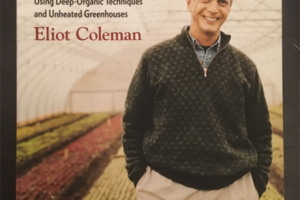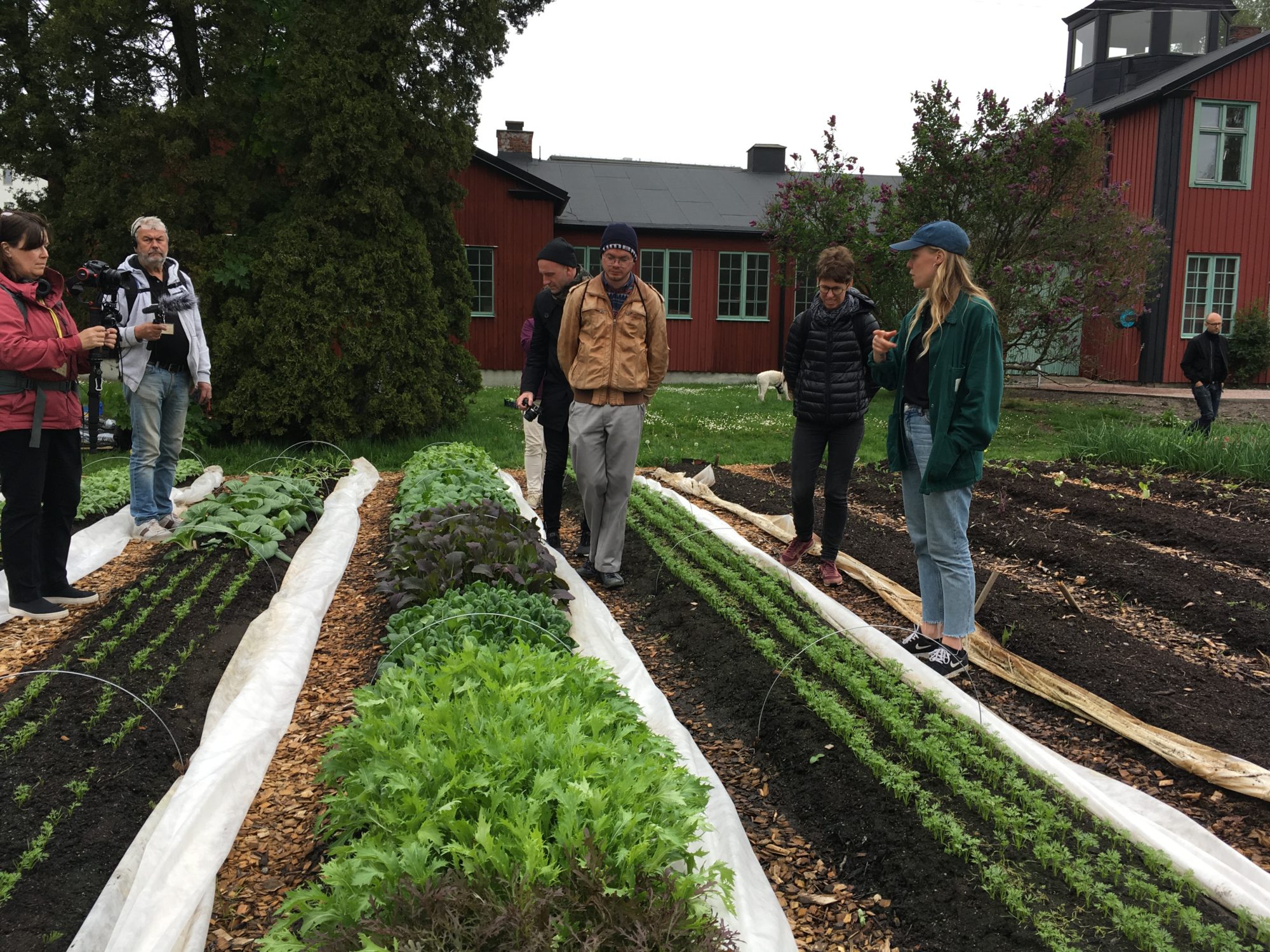News
Extending the season

Many people think the season is over now as the first frosts begin to get closer and the days are getting shorter with very much less sunlight. But there are many ways to prolong your growing season by choosing cold tolerant crops and by using infrastructure like small or big polytunnels, cold or warm greenhouses or even just a bed with a window on top. We’ll give you some tips in this tutorial on how to prolong the season
There are many reasons to grow veggies all year round, both if you sell the produce and if you just grow for personal consumption. For commercial growers it may even be a competitive advantage as it is ofter very rare to find local fresh produce in the winter season. For the household gardener, the benefits are so many as well – getting fresh greens straight from your garden in mid-winter is amazing, incomparable in taste with the ones you buy in the shops.
Picture above is from Kajodlingens farm in Frihamnen on 17th of November last year.
Extending the season – General principles
Firstly what you need to know about winter gardening is that crops don’t generally grow at all in the coldest and darkest winter months, so you need to plant crops that are mature before the coldest and darkest months kick in. Thus you would want to plant a lot more since your greenhouse will basically be an outdoor refrigerator keeping your produces fresh until you want to harvest them. So you will basically be planning how much harvest you want during the whole cold season and have it all be ready before the first frost. The key thing to take with you is thus to get as many plants as possible into the ground and to have these mature before the cold kicks in. If there is only one thing you take from this article it shall be this principle.
3 tips if you consider prolonging the season
1. Choose the right crops!
You want to choose crops that are very cold tolerant and can tolerate heavy frost or light frost depending on if you have them outdoors, in an unheated greenhouse or in a slightly heated greenhouse. But as most people don’t have a heated greenhouse we’ll be focusing this Grow Tutorial on plants that can tolerate the most frosts and make it all winter in unheated greenhouses or under a simple fabric. An example of frost tolerant crops is leafy greens (especially some varieties like Lambs lettuce), Spinach, Kale and certain varieties of Carrots and root vegetables. We also want the vegetables to be quick to mature which leads us to the next important point.
2. Sow your seeds at the right time!
As for many things in life, timing is key in planning your winter harvest. When choosing crops and planning when to sow them – one important thing to bear in mind is the days to maturity of that crop. Days to maturity means the days from seeding until the crop is ready to harvest and these days get longer in fall and spring as the hours of daylight gets shorter. So what you want to do is basically research the last day of frost which in Gothenburg is around October 15th and then take your crops days to maturity and count backwards. Check your approximate first frost here at SMHI:s website. So if we want to grow the salat variety “Lambs lettuce” outdoors which takes about 45 days to maturity we would plant them in the first of September latest. Learn more about how to plan for winter harvest in these videos by The Urban Farmer, Curtis Stone (who lives in a temperate climate in Canada quite similar to our Swedish Climate):
3. Extend your season with a simple tunnel or two!
If you use an unheated greenhouse you are actually able to extend your season around another month, so instead of having crops grow until mid-October, they might grow until mid-November. YES! You might think that building or buying a greenhouse is too expensive for you though, and probably you would want to start out on a smaller scale first to see if it makes any sense for you. No worries, there are plenty of budget alternatives to a full-scale greenhouse. One of the smaller and cheaper alternatives to a greenhouse is the “poly low tunnel” or mini hoophouse which you can basically make yourself with a couple of plastic or metal tubes that you bend and attach a polyethene or other type of fabric that you attach to it. You can also buy these tunnels in garden shops. And if you need more space for winter harvest or you scale up your farm or garden, you also use bigger polytunnels which are also much cheaper than a greenhouse. Learn how to build a poly low tunnel in this video:
Want another video about the different types of tunnels check out this video below by Curtis Stone:
Additional tips:
Choose a sunny location
Apart from the points above it is important to make sure you are choosing a good location to grow your crops if you really want to grow long into winter. The sun ange is much lower and thus the sunhours can drastically change from summer to winter on different locations. Make sure you have a site with little or no obstacles like buildings in the south shadowing your growing space. If you are searching for land use the “Discover” section on our website and make sure to visit the site so you can see how much sun it gets in winter. The Foodprint Lab offers help to property owners to do site studies to determine which sites are suitable for commercial farming in winter or summer. These places will have additional information about the amounts of sunhours on the site.
Presow seedlings
To presow seedlings and later transplanting them is a great way to minimize the time your crops take to mature when you plant them out. In spring you can start your seedlings indoors or in a greenhouse – to be able to put them out as early as possible in the outdoors in spring and get earlier harvest. By sowing seeds in a “plugg” or a “brätte” you can also save space in your soil – as you sow very densely and can later transplant into the correct spacing.
Try indoor farming
Apart from extending the season outdoors you can also try indoor farming through different techniques like growing microgreens, hydroponic farming or even aquaponics. Please let us know what you are most interested to hear more about and we will share more about these techniques in upcoming articles. Until then you can explore the swedish site hemmaodlat.se, which has extensive information and tips on growing food indoors at your home.
Book tip: Winter farming
A book tip for those who dream of growing for winter harvesting and even want to farm commercially during the winter months in a cold climate, we recommend the book “The Winter Harvest Handbook” by Eliot Coleman – a pioneer and inspirator of many of the top organic growers today. Eliot grows in Canada with a similar climate as in Sweden but a little higher latitude and thus a little more sunshine in the winter. Read more about Eliot’s exciting methods at their Four Season Farm, which in many years of succession cultivated and sold winter mites, spinach, salad mixes in mid-winter.
That’s all for us in this article.
More about winter gardening and prolonging your growing season coming up in future articles here at Grow Academy! What would you like to know more about? Leave a comment below with any tips, questions or topics. Stay tuned!
Best regards,
The GrowGBG team.





